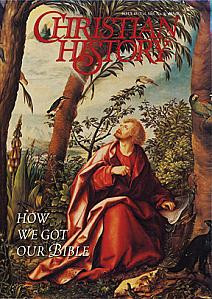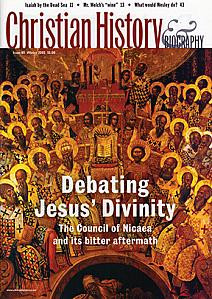Athanasius Listed the New Testament as We Know it

Athanasius listed books that could be trusted to be in the Bible.
THE CHRISTIAN BIBLE is not one continuous book, but an anthology of writings by several different authors. These writings are called “books.” The Bible is further divided into the Old Testament (the books written before the birth of Christ) and the New Testament (the books written after the coming of Christ). There is some disagreement between Christians as to which books should be in the Old Testament, but all orthodox Christians—Catholic, Eastern Orthodox, and Protestant—accept the list of books that we know as the New Testament.
The first person known to have listed all the New Testament books was Athanasius. A bishop of Alexandria, he is more famous for his efforts to defend the divinity of Christ. He suffered much and was exiled five times for his defense of the Nicene Creed and Christ’s being fully God and fully man.
Athanasius used to write an Easter letter every year to prepare the minds and hearts of his people for this important celebration. These were known as “festal” letters because they were written for a feast. In 333 he wrote, “It is God, my beloved, who brought about the slaying of His Son for our salvation and gave us the reason for this holy feast.”
On this day, 7 January 367 he wrote, “Inasmuch as some have taken in hand to draw up for themselves an arrangement of the so-called apocryphal books and to intersperse them with the divinely inspired Scripture...it has seemed good to me...to set forth in order the books which are included in the canon and have been delivered to us with accreditation that they are divine.” Bishops had been making such lists for over a century, but none had won wide-spread acceptance.
At that time, some churches still treated as Scripture the Didache (a treatise on church doctrine and practice), The Epistle of Barnabas, and a letter of Clement. Athanasius cut all three from his list. He also rejected all the Gnostic writings, such as The Gospel of Thomas and The Gospel of Peter, because these did not agree with the writings of Peter, Paul, and John—or with the articles of faith passed down from the time of the apostles. But whereas some Christians rejected Second Peter, Jude, and Revelation, Athanasius kept them on his list. The books he considered authentic were all written either by the apostles or by their associates.
The church generally accepted all the books of the Hebrew Scriptures as inspired by the Holy Spirit. These became the Old Testament. Athanasius’s list for the Old Testament dropped the book of Esther but accepted the rest. He rejected the Apocrypha, which are books included in the Septuagint (an ancient Greek version of the Old Testament) but not in the Hebrew Scriptures. Roman Catholics and Eastern Orthodox accept these books as part of the Bible.
Athanasius’s regard for the Scriptures was apparent in his letter: “These are fountains of salvation, that they who thirst may be satisfied with the living words that they contain. In these alone is proclaimed the doctrine of godliness. Let no man add to these, neither let him take anything from these.”
—Dan Graves
-----------
Athanasius upheld the integrity of Scripture. Are the biblical accounts trustworthy? Were they worth saving? Learn the truth about the New Testament's veracity in The Jesus Accounts. Watch at RedeemTV
The Jesus Accounts can be purchased at Vision Video.
and read more at Christian History #43 How We Got Our Bible
Athanasius also was a major player behind the scenes at Nicea Christian History 85 Council of Nicaea: Debating Jesus’ Divinity









